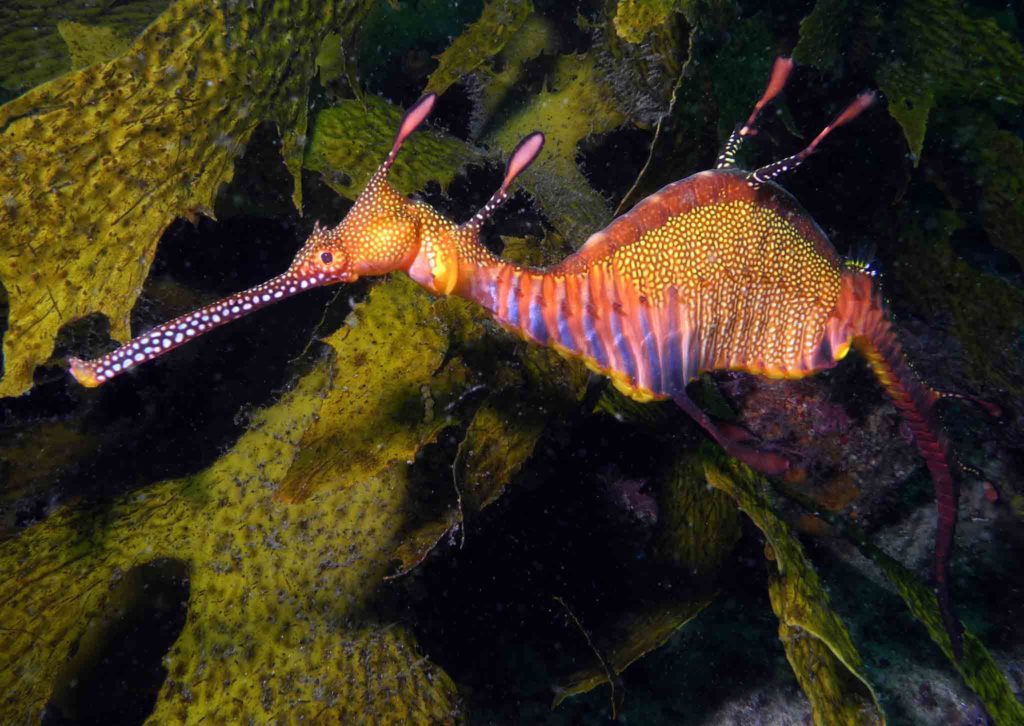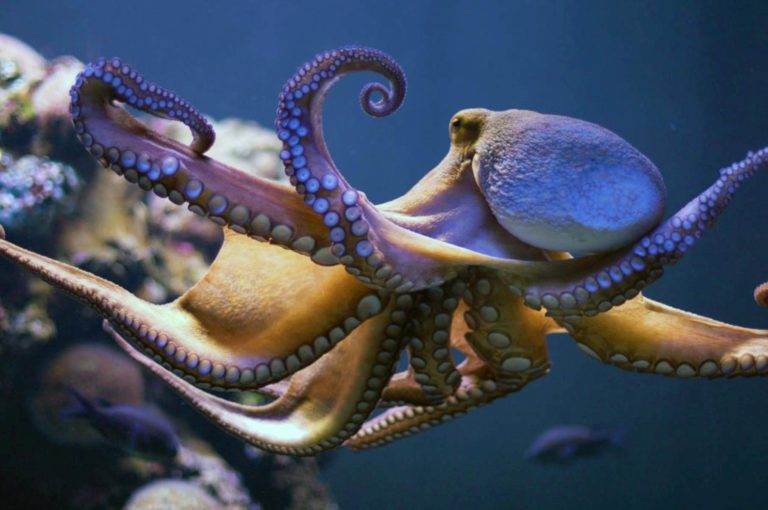Jumping genes, aka transposons, might be unfamiliar to most of us, but they feature in two recent studies relating to marine creatures prized by scuba divers – octopuses and seadragons – and could explain some of the mysteries surrounding these creatures.
A transposon is a DNA sequence that has the ability to move around within a genome, the set of DNA instructions found in a cell. Transposons can shuffle or duplicate themselves, using molecular copy-and-paste or even cut-and-paste mechanisms, and can cause rapid genetic changes when they insert themselves in the middle of or near a gene, preventing that gene from working normally.
Transposons make up 45% of the genome of the human brain, but now they have been found for the first time in the brain of an invertebrate, the octopus – and that might just explain its proven high level of intelligence.
The study was carried out by an international team of 20 researchers co-ordinated by Remo Sanges from Scuola Internazionale Superiore di Studi Avanzati (SISSA) in Trieste and Graziano Fiorito of Stazione Zoologica Anton Dohrn (SZAD) in Naples.
The “extremely complex” brain and cognitive abilities of octopuses are unique among invertebrates, say the scientists, and they reckon jumping genes are the key to this vertebrate-like complexity after finding them in the brains of both the common octopus (Octopus vulgaris) and Californian octopus (Octopus bimaculoides).
As in humans, some transposons are inactive because they have accumulated mutations over time while others, though intact, are blocked by cellular defence mechanisms – though even fragments and broken copies of transposons can provide raw material for evolution, say the researchers.
The most relevant transposons, known as Long Interspersed Nuclear Elements (LINE), remain potentially active. Previously thought to be no more than vestiges of the distant past, recent research has revealed that LINE activity is finely regulated in the brain, particularly in the hippocampus area, and could be associated with cognitive abilities such as learning and memory.
The octopus genome is rich in transposons. Most are inactive, but by using the latest sequencing techniques to focus on those still capable of copy-and-pasting, the researchers identified an element of the LINE family in parts of the octopus brain crucial for cognitive abilities.
“I literally jumped on the chair when, under the microscope, I saw a very strong signal of activity of this element in the vertical lobe, the structure of the brain which in the octopus is the seat of learning and cognitive abilities – just like the hippocampus in humans,” said Giovanna Ponte of SZAD.
“The discovery of an element of the LINE family active in the brain of the two octopus species is very significant, because it adds support to the idea that these elements have a specific function that goes beyond copy-and-paste,” said Sanges. The study is published in BMC Biology.
Seadragon looks

In the case of seadragons, which are found in the wild only in Australia, transposons could explain those distinctive looks so prized by underwater photographers, according to University of Oregon scientists.
By sequencing the genomes of both the weedy and leafy varieties of seadragon, the scientists found that a key group of the genes that in other vertebrates direct development of the face, teeth, appendages and parts of the nervous system was missing.
“Seadragons are oddballs in a group of already oddball fish,” observed research assistant Prof Clay Small, referring to their close relatives in the Syngnathidae family, seahorses and pipefish.
“There’s a lot of interest in how malleable to evolution things like the head and face are,” said senior research associate Susie Bassham, who co-led the study with Small. “And seadragons can be good case studies for that kind of question because of the extreme differences they’ve evolved fairly quickly.” Along with seahorses and pipefish they branched off about 50 million years ago, she said, “which is relatively recently by evolutionary standards”.
Obtaining rare access to tissue samples through the Birch Aquarium at Scripps Research and Tennessee Aquarium, the researchers analysed the seadragons’ genetic sequences and those of seahorses and pipefish. Compared to bony fish such as zebrafish and sticklebacks, all the Syngnathidae were missing the genes that guide development but, unlike their relatives, seadragons also contained higher than usual amounts of transposons.

A specialised X-ray microscope was used to capture a high-resolution 3D image of a 30cm weedy seadragon (Phyllopteryx taeniolatus). It was scanned in sections, with the images stitched together to form a complete picture that revealed the finest details of the seadragon’s bones.
“Nobody had ever imaged any part of a seadragon before in that way,” said Bassham. “We could see that the support structures for the leafy paddles appeared to be elaborations of spines, and then the fleshy appendages were added to the ends.” She said this reinforced the idea that what seemed to be ornamental appendages evolved from spines.
The team hope that making seadragons’ genome sequences publicly available will assist in understanding how the strange creatures evolved, as well as in efforts to conserve them. Their study is published in Proceedings of the National Academies of Sciences.
Also on Divernet: Have You Snapped A Seadragon?, Taking Care In The Dragon’s Lair, Ruby Seadragons Make Live Debut

